Long before I started working with and in support of the rural farmers in the region around Philadelphia, there was Linvilla Orchards.
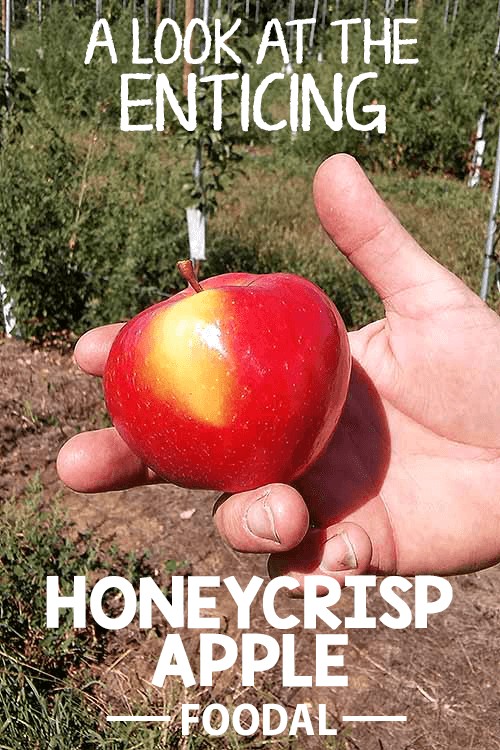
When my friends and I got a hankering to take in the crisp fall air and scarf down some cider donuts, we’d pile in the car and head 30 minutes west to harvest our own Jonagolds.
Linvilla is the city’s go-to pick-your-own farm. Located a quick 30-minute drive from Philadelphia, the oldest continuously operating working farm in Delaware County draws visitors to its fields, farm store, garden center, fishing ponds, and holiday attractions in spring, summer, and fall.
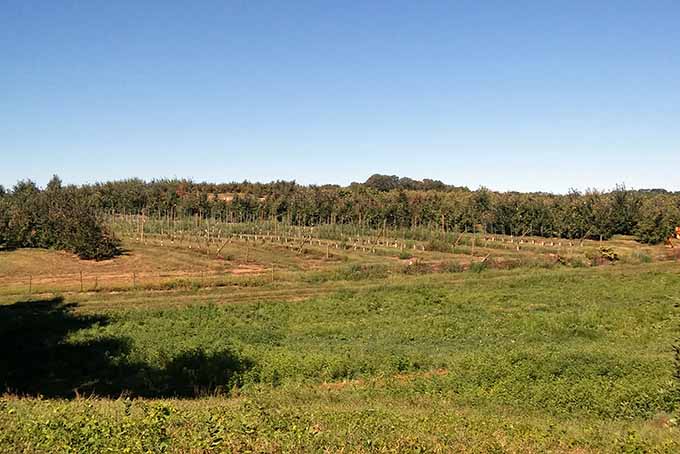
And it’s a shining example of a third-generation farm business maintaining profitability through agritourism – or as Farmer Norm Schultz calls it, “agri-tainment.”
Part Farm, Part Fun
Norm has managed the farm since the mid-nineties, working alongside the Linvill family. His team provide the “ag” part of that moninker, managing the production of berries, rhubarb, tree fruits, melons, cucumbers, grapes, tomatoes, sweet corn, peppers, pumpkins, and flowers for pick-your-own and harvest.

The third-generation farmowners handle the “-tainment” bit, running two retail stores onsite as well as Pumpkinland, an autumnal playspace that features 100 tons of pumpkins each year, perfect for carving or making your own soup and home-roasted pumpkin seeds.
They also sell Christmas trees grown on the farm in December.
Linvilla even runs two swim clubs, today’s version of the swimming hole that friends of the family would visit back in the day on the farm’s original property, which is now surrounded by the residential development of Media, Pennsylvania.
Comparing Varieties
I paid a visit to Linvilla on a cool yet sunny September day during a weeks-long stretch of no rain. While nighttime dips in temperature below freezing this April ruined much of Linvilla’s stone fruit crops, the apples made it through unscathed.

Early season varieties – like Zestar, Summer Rambo, and Gingergold – had already passed, while rows of Red Delicious, Jonamac, Cortland, McIntosh, and Empire were open for picking.
The farm is not certified organic, but they’re careful and judicious about spraying for pests since they are letting consumers into their fields, often intervening only to save a crop – and the farm’s finances – from serious damage.
While consumers pick from dozens of varieties during Linvilla’s fall season, the most sought-after type is – you guessed it – the Honeycrisp.
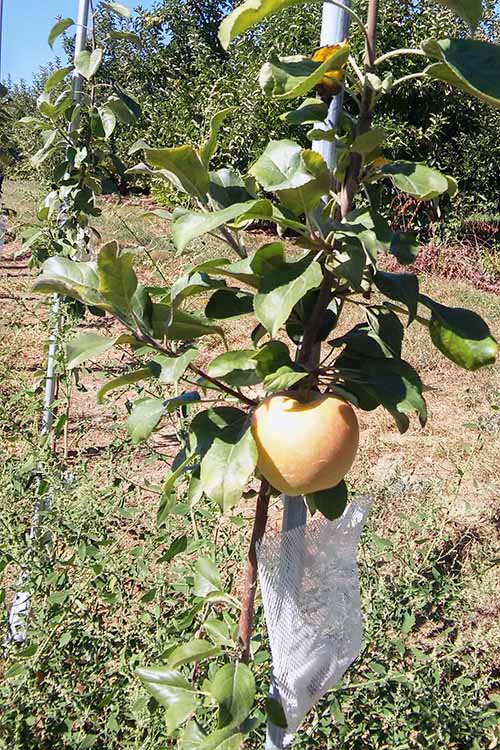
“The Honeycrisp is the most highly demanded variety for us today,” says Schultz. Linvilla boasts more than 400 Honeycrisp trees, added in waves over the past several years as demand for this sought-after apple has risen.
This year, Schultz is especially excited about a new variety of Honeycrisp called Firestorm – so excited that he and his team planted 600 new Firestorm trees in April 2016.
We all know Honeycrisp is popular – but what prompted this big investment in a new variety?
It all has to do with the look of the fruit.
Blushing Beauties
As their crops grow, apple producers are concerned with developing a juicy texture, high sugar content, and – depending on the type – a nice red blush over as much of the apple as is applicable to that variety.
While in-the-know consumers might dismiss a shiny Red Delicious after too many mealy, disappointing experiences, they still eat (and shop) with their eyes first. A nice red coloring is the first sign of a ripe, tasty piece of fruit, whether we’re at the supermarket or the farmers market.
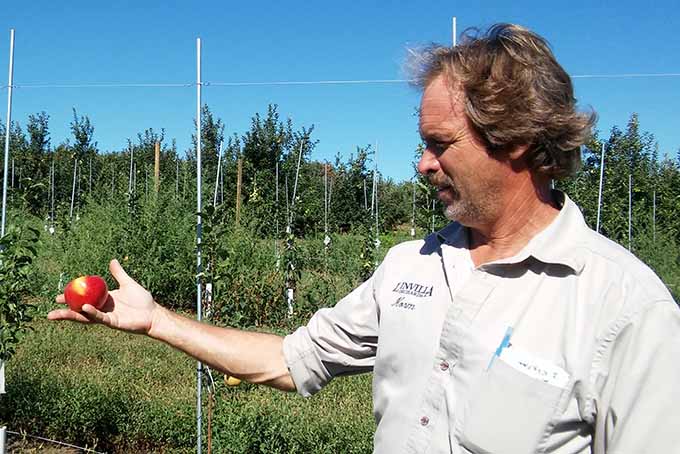
As any apple grower (or anyone who’s ever wondered why that perfect-looking Red Delicious tastes like styrofoam) can tell you, most consumers simply won’t buy apples – even the precious Honeycrisp – unless they see a shiny, blemish-free skin.
And on apples that develop any sort of red or pink blush, they’re looking for as much of that red as possible.
The Honeycrisp, which was developed in Minnesota, is well-adapted to a cooler climate and requires cool nights to develop its signature blush coloring.
When growers in warmer parts of the country produce these apples, the flavor, texture, and juiciness can be just as good. But often, the apples ripen before that red coloring becomes pronounced.
Firestorm was developed to change that – it can achieve the color consumers are looking for even without that optimal cold climate.
If your Honeycrisps were grown somewhere without those cold nights to redden them up, there’s a chance you may have seen early harvests that look pale and buff, with hardly any red at all. But these will have that same signature snappy texture and bright, juicy flavor you’re used to.
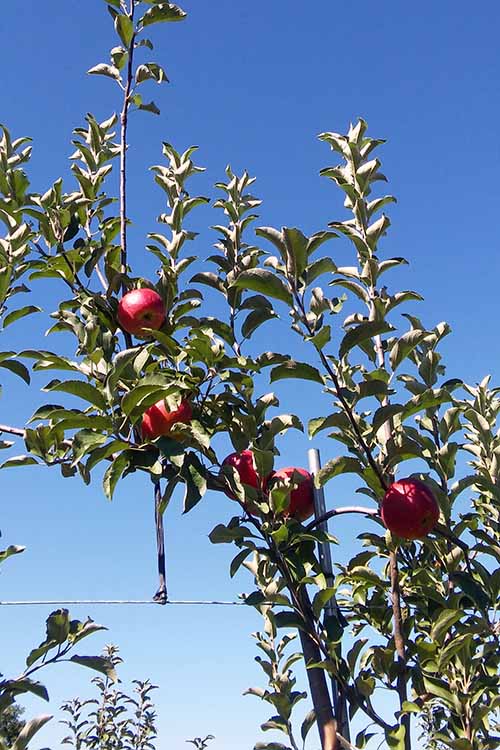
That’s the issue that growers like Schultz are trying to avoid. But this solution to one of the Honeycrisp’s few drawbacks is not without potential pitfalls.
“There was some fear in the industry that people might pick [the fruit] earlier and not get the flavor that people demand from it,” says Schultz.
Apples normally take a few years to fruit fully; this fall, only about 5 percent of his trees bore fruit, and then it was usually just a single apple each.
Nonetheless, we were able to harvest a few from the field and give them a taste.
I thought the Honeycrisp tasted just as good as any I’ve had, and Schultz agreed.
“I felt like the texture on them was firmer. Maybe because there was only one fruit on the tree,” he says. “I picked a few that weren’t full red and ones that were full red, and either way, to me, the flavor was exceptional.“
The Economics of the Honeycrisp
While working to get more red on a much-hyped apple like the Honeycrisp might seem like a waste of effort, this in-demand – and often more expensive – variety isn’t the cash crop you might imagine it to be.
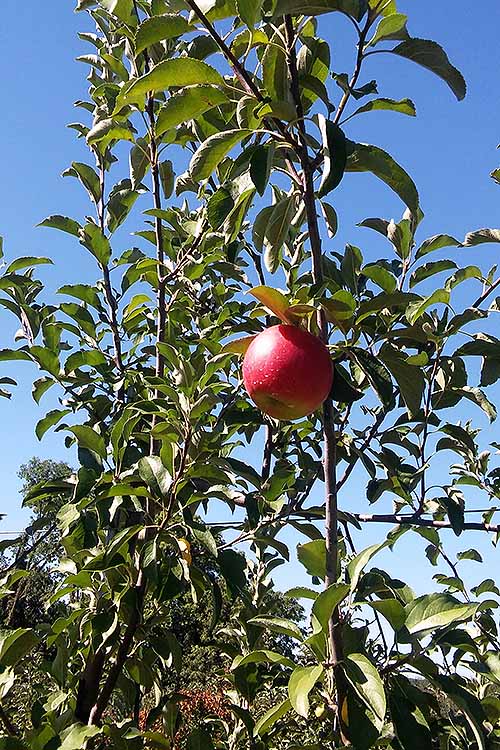
I’ve seen Honeycrisps selling for three times as much as other varieties at the wholesale level, and assumed that this was a case of demand far outstripping supply, and farmers taking advantage of this to command a rare (and well-deserved) premium for an apple people salivate over months before fall even begins.
But there’s more to the story behind the price of Honeycrisps than just how tasty it is to eat.
As you might imagine, these are sort of the divas of the apple world, requiring careful handling.
“The big problem with Honeycrisp is that they drop easy,” says Schultz.
The apples are also susceptible to bruising and to a condition called bitter pit, in which a calcium deficiency causes brown spots to form on the skin. While the apple is unchanged in texture or flavor, the outside looks, in Schultz’s judicious estimation, “aesthetically not pleasing.”
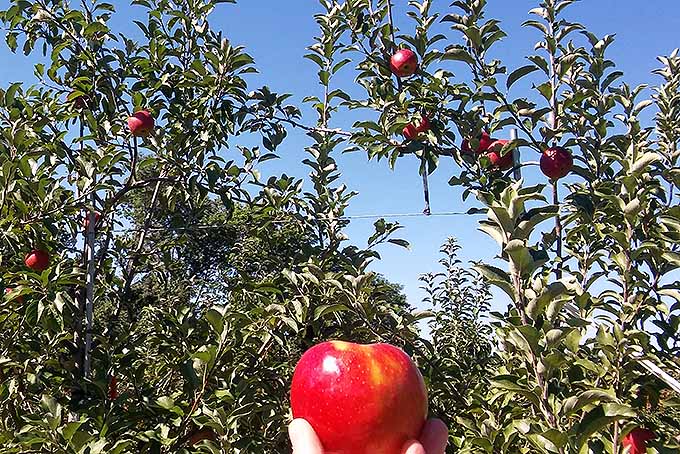
“We hope the Firestorm is gonna get over some of those issues,” he says. “Time will tell.”
Cosmetic issues mean that more apples get culled from the “number 1” fruit that makes it to Linvilla’s farmstand. Apples also have to be thinned – usually only one out of five blossoms, the “king bloom,” is kept on the each tree when this practice is carried out in the spring.
Farmers do this to increase size of the finished fruit and maintain airflow around the largest fruit, which helps to prevent damage from pest pressure and other apple diseases in Pennsylvania’s warm, humid, pest-friendly climate.
Low Yield, High Interest
“Honeycrisp have the potential to produce 250-300 pounds of fruit per tree on the system we’re using,” says Schultz. With their characteristic early dropping issue and thinning the blooms for optimal quality of the finished fruit, that means the yield ends up being “considerably less.”
And this is not just for Linvilla’s trees, but across the board.
“That’s everyone in the industry’s problem. In a high-yield world, you could get a thousand bushels to the acre,” Schultz says. “The state average for all varieties is probably around 500 bushels. If you look at Honeycrisp for the actual amount of food that goes to table, it’s probably 200 bushels to the acre, and that’s what’s driving the price so high.”

Because consumers are so enamored of the Honeycrisp, producers have to make up for having less of their most in-demand fruit by raising prices.
“It isn’t [just] demand that’s driving farmers to take higher profits,” Schultz says. “It’s that the lack of yield is driving us to sell them at a price that makes sense, because we’re losing market share on other varieties.”
Despite the premium on Honeycrisp, farmers aren’t exactly getting away with highway robbery by charging more for this variety.
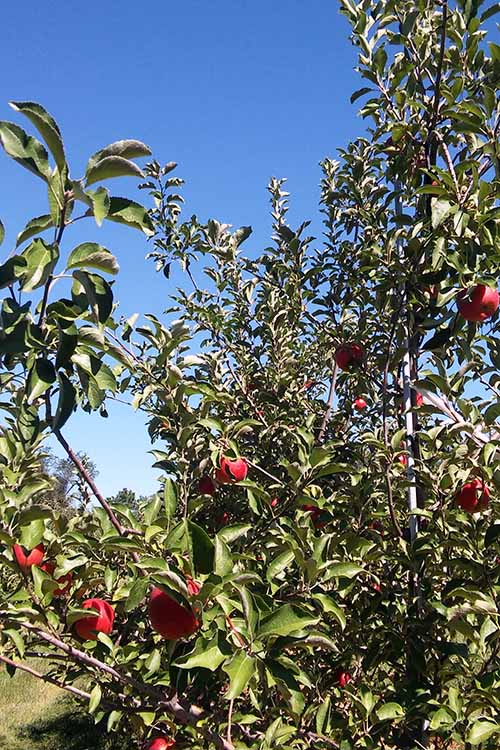
“Any grower I talk to has not been happy with the profit margin on Honeycrisp. But we’re very excited that people are asking for an apple by name — that people are excited to eat apples,” Schultz says.
And any interest consumers are taking in specific apple varieties is good for farmers, who can use that interest to entice customers to farm stands, farmers’ markets, and farm stores to increase sales across the board.
“[High interest in Honeycrisp] is good because of what’s happened to the Red Delicious, which was a good tasting apple 50 years ago and an even better tasting apple before that,” Schultz says. “It has become a very bland, super high-colored, non-flavored apple that looks good and ships good, but doesn’t taste good.”
After being inundated with bland, mealy supermarket Red Delicious apples for half a century, an enticing type like the Honeycrisp gives fruit farms like Linvilla Orchards another chance to show how delicious their products can be.
A Bite of the Apple
If you’re in a lucky (read: northern) part of the country, you still have a little time to seek out the Firestorm – or any varietal of Honeycrisp – to pick yourself at your favorite PYO orchard.
And even if Honeycrisp season has passed where you are, keep checking your farmers’ market for exciting new varieties that will be rolling out throughout the fall, and again in the spring!

What types of apples will fill your fruit bowl and show up in baked goods like delicious seasonal pies and other dishes (or maybe even cocktails) this year?
We have plenty of tasty apple recipes to offer for those firm cooking apples, or try a combo of tart and sweet, juicy and firm, to give your pies and sauces a more complex flavor and satisfying texture.
Honeycrisps also make a delicious juicing apple.
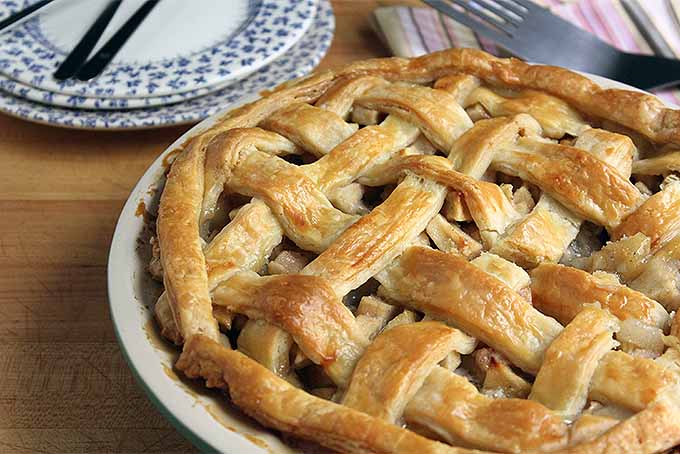
- Apple Dumplings
- Apple Pear Pie with Cardamom and Ginger
- Baked Apples with Dried Fruit and Nuts
- Home-Canned Applesauce
- Fresh Spinach Apple Juice
- German Riesling Apple Cake
- Pressure Cooker Maple Cinnamon Applesauce
- Rice Salad with Apple, Cranberries, and Peas
- Slow Cooker Overnight Cranberry Apple Oatmeal
- Stuffed Acorn Squash with Apples, Nuts, and Cranberries
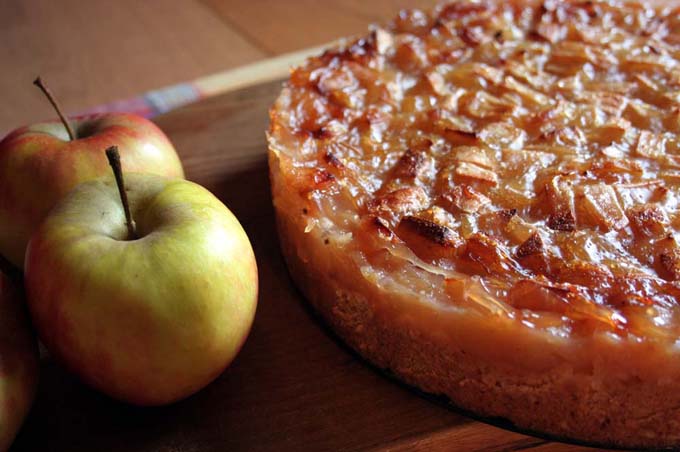
Photos by Alex Jones except where otherwise credited, © Ask the Experts, LLC. ALL RIGHTS RESERVED. See our TOS for more details.
About Alex Jones
Alex Jones is a local food consultant and writer based in Philadelphia. Evangelizing about local food is second nature to Alex, whether she’s working an artisan cheesemaker’s farmers market stand or developing growth strategies for her favorite small-scale artisans. Her favorite areas to work in currently are the artisan cheese and pastured meat supply chains. When she’s not working, Alex spends her time managing her usually-overstuffed fridge, growing vegetables, foraging for fruits around the city, playing tuba in a disco cover band, and hanging out with her partner Dr Thunder, Philadelphia’s karaoke superhero, and their two cats, Georgia and Li’l Mama. Alex’s favorite food is some kind of cheese on some kind of bread.




Just had one today. Although, I do always question whether I am getting the real deal, but I guess I cannot complain. They are particularly juicy though, and I am pretty sure they will be out of season here soon so I am glad I got one while they are here.
Thanks Alex. Always like to spread the word about the goodness of Fruit! Farmer Norm
Thanks so much for having me, Norm!
These are my sister’s favorite apples.